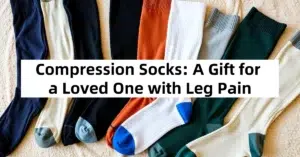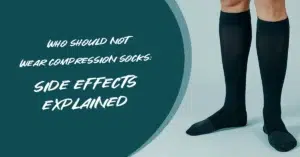Have you ever felt your legs like lead balloons after enduring hours in a cramped airplane? Why do seasoned travelers perpetually rely on what they consider to be their not-so-secret weapon against fatigue and discomfort? The answer lies in the snug embrace of compression socks for travel, a game-changer in air travel comfort. Many everyday fliers speak of compression socks as the ultimate lifesaver and game-changer in airplane comfort. Science and snug aside, these socks present the ultimate travel hack you never knew you needed.
In this guide, you will unwrap the world of compression socks created specifically for air travel to make your next trip comfortable and genuinely enjoyable.

Here is what awaits you inside:
- The concept of compression socks for travel and their benefits.
- Do you need to wear compression socks on the plane?
- Guide through the pressure: what compression level is the best for your flights?
- Understanding the conditions: When should you not wear compression socks for travel?
- Flight socks vs. compression socks. What is the difference?
- Comprehensive guidance on the best compression socks for your travels.
- Fitting matters: how fitting should compression socks be?
- Opting for the right compression level for travel.
So get ready to take a journey with us as we find out how traveling with a mere pair of socks might transform your flying, with all the understanding backed by intriguing facts and expert advice. This guide is your way to make flying comfortable if you are a seasoned traveler or preparing for your first flight.
What are Compression Socks for Travel?
You’ve packed your bags, checked your passport a thousand times, and you’re ready for adventure. But have you considered how your legs will fare on that long-haul flight? Well, that’s where compression socks come into the picture.
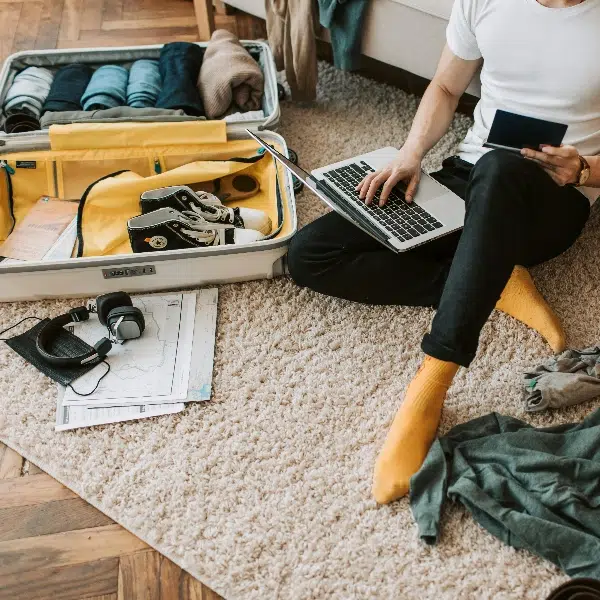
Now, you may think, but what’s the big deal about socks? It’s actually a big deal, but not only because of the fit. Compression socks for travel are more than just a slightly uncomfortable piece of clothing. They’re a critical tool for preventing deep vein thrombosis (DVT), a condition where blood clots form in the deep varicose veins of your legs during long periods of inactivity.
Compression socks, with their gentle squeeze, enhance circulation, lower swelling, and lower the likelihood of clots. They’re actually about landing in a foreign country and welcoming the culture rather than about taking a seat because your feet are sore and swollen from the flight.
Should you, like me, wear compression socks on your next adventure? Yes, at least most of the time, especially for flights lasting four hours or longer. However, it’s not that simple, so let’s explore when you shouldn’t wear them for long periods and what you should look for when buying a pair of compression socks.
When You Should not Wear Compression Socks for Travel?
Compression socks are beneficial for most travelers. However, before you run to the store or online outlet to buy a pair, I’d like to discuss when it’s better to stay compression-free while hitting the road.
Some existing or relatively transient health conditions might oppose wearing flight socks and even cause more harm than good. Compression socks are not recommended when you suffer from peripherical neuropathy or peripherical arterial disease or if your skin layer is compromised.
The same goes for people with skin diseases – for example, those who have skin infections, recently had a skin graft, compromised skin layer, restricted blood flow, or dermatitis. Even with the onset of more or less minor symptoms, compression may worsen the situation, so if that’s about you – seek medical advice before ordering a pair of compression socks.

Source: https://health.howstuffworks.com/skin-care/problems/treating/identify-a-skin-rash.htm
Key Considerations:
- Check your health status: Compliance with arterial disease or strong dermatitis is not the case for wearing compression socks.
- Consult with professionals: When in doubt, ask your physician to give you expert advice.
- Listen to your body: If compression socks cause discomfort or pain, you should stop them immediately.
Understanding your body’s needs and any underlying health conditions is crucial before slipping on compression socks for your next flight.
How Do Flight Socks Differ from Compression Socks?
When you start researching travel wellness, you will likely encounter both “flight socks” and “compression socks” as potential candidates to keep your legs happy. Although those two terms are closely related, knowing the key distinctions can help you choose the best companion sock for your needs.
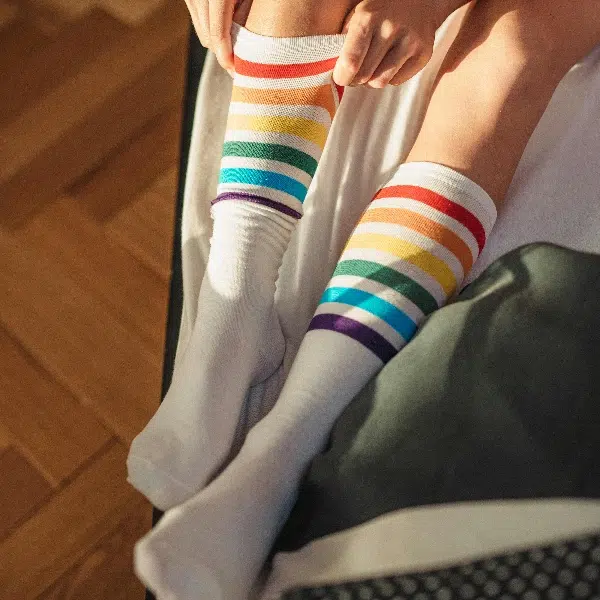
Flight socks are, by definition, a type of compression sock, but they are generally lighter in compression strength. Flight socks, as the name implies, are intended for use during flights. They are designed to prevent blood clots while flying, as well as minimize swelling and feeling fatigued in your legs.
In other words, flight socks prevent blood clots by increasing blood circulation which also helps to keep your feet in ideal shape. Unlike flight socks, graduated compression socks offer a wider range of compression strengths. They are recommended for a broader range of health concerns, sports recovery, and medical conditions other than just flying.
It is crucial to consider the following to choose the right type:
- Identify your need: Are you looking for general comfort on a flight, or do you have specific health concerns?
- Consider compression levels: Flight socks offer gentle compression, while medical-grade compression socks provide a stronger squeeze.
- Think about duration: For longer flights, you might benefit more from medical-grade compression socks to keep circulation in check.
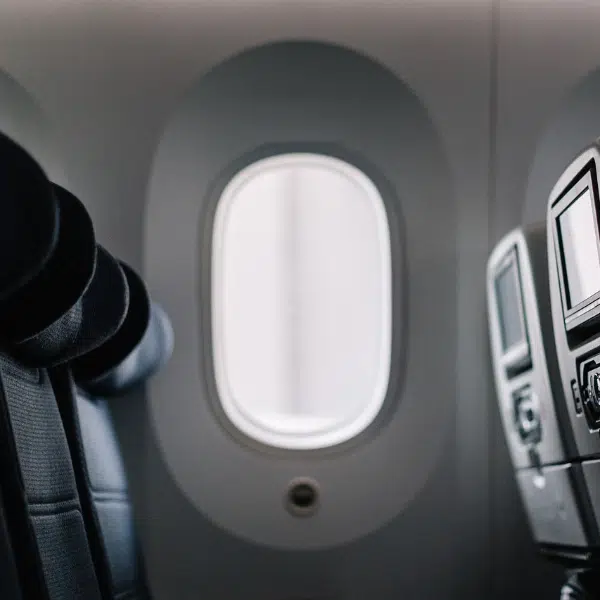
This knowledge can help determine and narrow down which option is right for you.
What’s the Best Fit for Your Travel Compression Socks?
Choosing compression socks isn’t just about grabbing the first pair you see. You’re looking for your travel feet’s best friend. Here are the need-to-know keys to finding that perfect pair.
Material Matters: It’s All in the Fabric
- Go for Breathable: Your feet need to breathe, especially on those long-haul flights. Look for materials for compression socks for travel that say bye-bye to sweaty feet.
- Elasticity is Key: Materials like merino wool, nylon, and spandex are your go-to. They contain tightness without slack. The perfect fit, Snug, not tight.
The Perfect Fit: Snug, Not Tight
- Size it Right: Like your favorite jeans, flight compression socks need to fit just right. Measure your calf, check the size chart, and maybe even try before you fly.
- Graduated Compression: Aim for that just-right squeeze from ankle to calf. It should feel like a gentle hug, not a squeeze play.
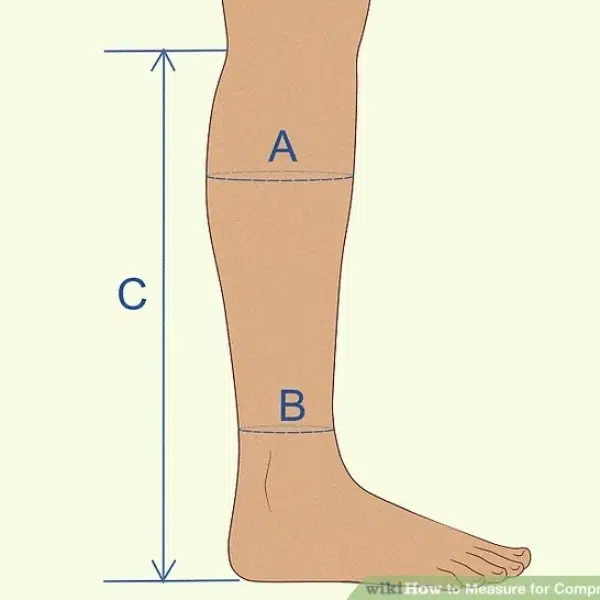
Source: https://www.wikihow.life/Measure-for-Compression-Socks
Compression Levels: Not Too Loose, Not Too Tight
- Find Your Sweet Spot: 15-20 mmHg is the gold standard for travel. It’s the pressure perfect for keeping things moving without pinching.
- Health Check: Do you have specific concerns? A quick chat with your doctor can help you reach your ideal mmHg level.
With these tips, picking the perfect pair of compression socks for your travel is a breeze. Your feet—and your travel diary—will thank you for adding this simple yet transformative accessory to your adventures.

Your Checklist for Compression Success
- Fabric: Choose breathable, moisture-wicking elasticity.
- Fit: Opt for a snug fit and graduated compression levels for all-day ease.
- Level: Unless you have the green light from a healthcare pro for more, mild compression of 15-20mm of mercury is the way to go.
How Tight Should Your Travel Compression Socks Be?
Nailing the perfect fit for your compression socks is like finding the right tension in a guitar string—too loose, and you lose the melody; too tight, and you risk a snap. Here’s how to strike the right chord for comfort and health:
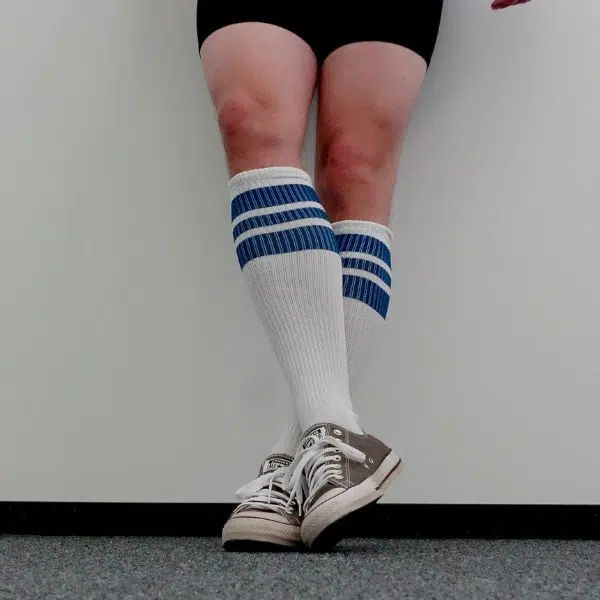
- A Gentle Hug: Your socks should embrace your legs snugly, offering consistent pressure from your ankle up to your calf. Think of it as a friendly squeeze, not a tight grip.
- No Pinching Allowed: If your socks are digging into your skin, leaving marks, or causing discomfort, it’s a sign they’re too tight. Compression socks should feel like a second skin, not a constriction band.
- Check for Signs: Throughout your journey, check your legs. They should feel supported and energized, not numb or tingling. Adjustments might be necessary if you’re feeling any discomfort.
Finding the Sweet Spot
- Measure Up: Before purchasing, measure your calf circumference at its widest point. This number is your golden ticket to finding a pair that fits just right.
- Consult the Chart: Use the sizing chart provided by the sock manufacturer. They’ve done the homework to ensure their sizes match your measurements for the best fit.
- Adaptation in Advance: Wear your compression socks around the house before your trip. It’s the perfect way to ensure they’re comfortable enough for hours in the air.

Ensuring the Perfect Pressure
- Your compression socks should feel like a gentle, supportive hug around your legs.
- Avoid any discomfort: No pinching, no digging in. Comfort is key.
- Measure your calf and consult the sizing chart for the best fit.
With these guidelines, you’ll find the perfect balance of snug and support, making your next flight the most comfortable one yet. Ready for takeoff? Your legs certainly are!
What’s the Optimal Compression Level for Travel?
Choosing the right compression level is like selecting the perfect playlist for your journey—it sets the tone for your entire trip. But with so many options out there, how do you hit the right note? Let’s break it down:
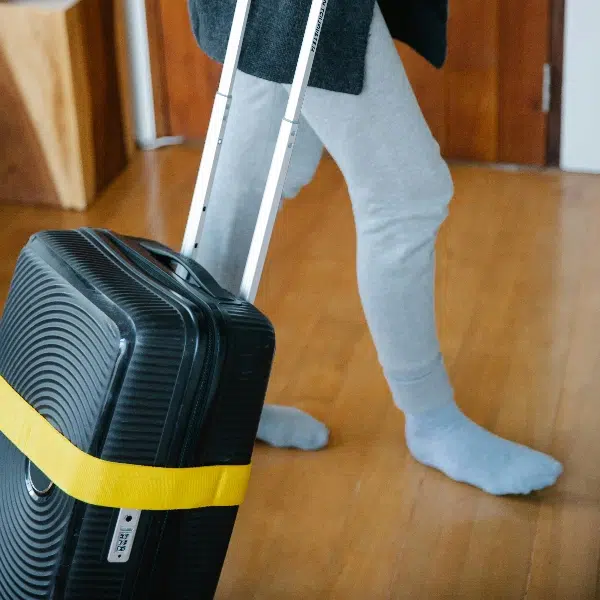
- Mild Compression (15-20 mmHg): This is your go-to for most travel scenarios. Ideal for preventing swelling and discomfort, it’s like the comfort food of compression levels—just right for most.
- Moderate Compression (20-30 mmHg): Do you need a bit more support? This level steps it up, which is great for those with circulation issues or previous episodes of DVT. It’s the power ballad of compression—strong and impactful.
- Firm Compression (30-40 mmHg): Reserved for specific medical conditions and under doctor’s advice. This is the heavy metal of compression levels—powerful and precise.
Choosing Your Tune
- Understand Your Needs: Are you looking to simply avoid swollen ankles, or do you have a medical condition that requires more support? Your need dictates your level.
- Consult a Professional: If you’re veering towards moderate or firm compression, a quick consultation with your healthcare provider can ensure you’re making a sound choice.
- Comfort is Key: Regardless of the level, your compression socks should never cause pain or extreme discomfort. If they do, it’s time to reassess.
Key Takeaways
- Start with mild compression (15-20 mmHg) for general travel comfort.
- Consider moderate compression (20-30 mmHg) for enhanced support under guidance.
- Firm compression (30-40 mmHg) is for specific medical needs, with professional advice.
Just like the perfect song can elevate your travel experience, the right compression level can transform how you feel during and after your flight.
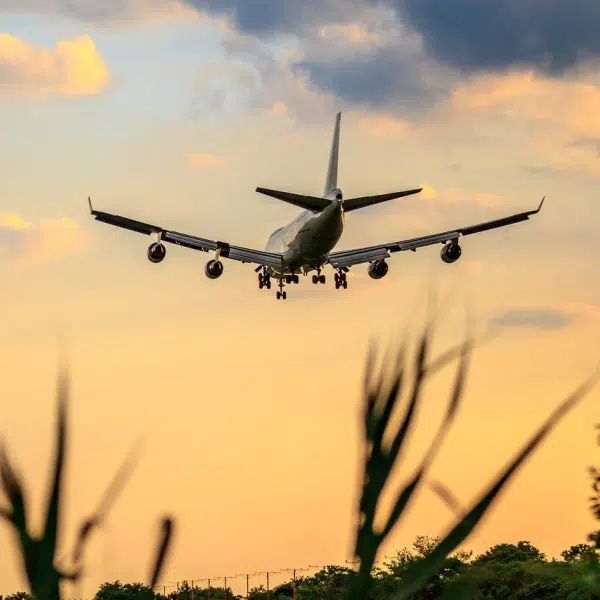
Conclusion: Step Up Your Travel Game with Compression Socks
You have learned how to pick the right compression socks and what the ideal level of compression for your travels is. Now you’re all set to make your next flight the most comfortable and healthy.
- Let’s quickly recap the key takeaways:
- Start with mild compression (15-20 mmHg) for most travel situations.
- Ensure a snug, comfortable fit without tightness or discomfort to avoid blood clots.
- Choose breathable, moisture-wicking materials for all-day comfort.
- Consult a healthcare professional for moderate to firm compression levels.
Compression socks may be more than just travel accessories; they are an investment in healthier and more comfortable journeys. Whether you are flying off on a business trip or a vacation adventure, the right pair will make sure you land refreshed and recharged. Investing in the proper compression pair also upgrades your experience and looks out for your health and well-being while on the move.
🧐FAQs on Compression Socks and Air Travel
1. When should I take off my compression socks after a flight?
It’s best to keep your compression socks on for about 1 to 2 hours after your flight lands. This extra time helps your circulation adjust back to normal as you start moving around again. If you’ve been on a particularly long flight, or if you have specific circulation issues, consider keeping them on longer, but always follow your healthcare provider’s advice.
2. Are compression socks necessary for long flights?
Yes, compression socks are highly recommended for long flights. They help prevent swelling, discomfort, and the risk of deep vein thrombosis (DVT) by improving blood circulation in your legs during prolonged periods of inactivity.
3. How long can you wear compression socks when traveling?
You can wear compression socks for the entire duration of your flight. In fact, it’s advisable to put them on a couple of hours before your flight and keep them on for 1 to 2 hours after landing. For continuous travel or multiple flights, wearing them throughout your journey is safe, as long as they’re comfortable.
4. Should I wear compression socks on a long flight?
Absolutely. Wearing compression socks on long flights supports your circulatory system, reduces swelling, and minimizes the risk of DVT. They’re a simple, effective way to make your travel experience more comfortable and healthier, especially when you’re confined to a seat for hours.
